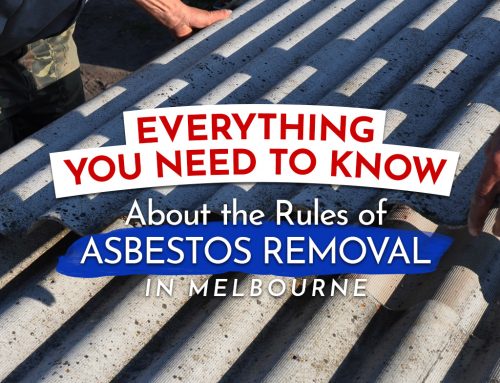You can still end up being exposed to asbestos by accident, even after taking pains to steer clear of it. Possible scenarios include having to move about in an old attic or stumbling across building waste during a leisurely stroll. While proper disposal and preventive measures lessen the chances of you encountering such a situation, it’s still a good idea to at least know what to do if it happens to you or to someone you know. For one, you ought to deal with your contaminated clothes as soon as possible, following the 3 steps listed below.
3 Steps to Safely Handle Asbestos-Contaminated Clothes
• Prevent Further Contamination
Your first instinct might be to pat the asbestos away, as you would do with a clump of lint. Don’t follow that instinct, though–dusting off the asbestos will spread the particles. Do not shake the material off your clothes, either. This creates a cloud of fibers and might end with you inhaling the asbestos.
Leave the room quickly and close the door behind you. Find a pair of rubber gloves and carefully remove your contaminated clothes. Otherwise, if you wish to wipe off the asbestos, do so with a damp cloth. Wet the clothes thoroughly to keep the remaining fibers or dust from spreading further. Place them in a bag together with the gloves.
• Clean With Care
The asbestos has to be washed off your clothes next, but don’t toss your clothes into your washing machine! The material can remain in the machine and contaminate the next basket of laundry or, worse, become airborne. Instead, bring the contaminated clothes to asbestos removal experts or a specialist laundry facility. Label the bag clearly, indicating the presence of asbestos.
• Dispose
Even if the experts manage to wash the asbestos away, it’s advisable to toss the contaminated clothes in the end to be safe. However, do not burn the clothes! Asbestos cannot be destroyed by fire, but it will break down into fibers and be carried on the resulting smoke. The clothing should not be buried, either. Visit an authorized business to dispose of the clothing safely.
Once the entire process is done, empty container bags used in storing the asbestos-contaminated clothing should be disposed properly.
After safely dealing with your clothes, you might now wonder if that single instance puts you at risk of contracting asbestosis, mesothelioma, or other diseases. Of course, your risks are far lesser than that of someone who is exposed to asbestos for several straight hours because of work. That being said, though, asbestos is still a Category 1 carcinogen, confirmed to cause cancer. Err on the safe side–inform your physician and have regular check-ups.
When faced with a possible asbestos contamination, it’s a good idea to call for professional assistance. However, there are steps that you can take to help speed the asbestos process along. Keep this guide handy in case you or someone you know is accidentally exposed to asbestos!
Need help with asbestos? Aware1 are a class A asbestos removal company in Melbourne, speak to us today to find out how we can help!
Found this post informative? Read more helpful articles about asbestos management by visiting our blog.





